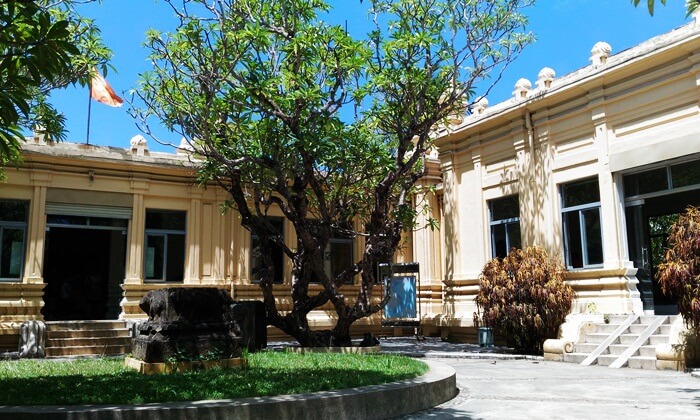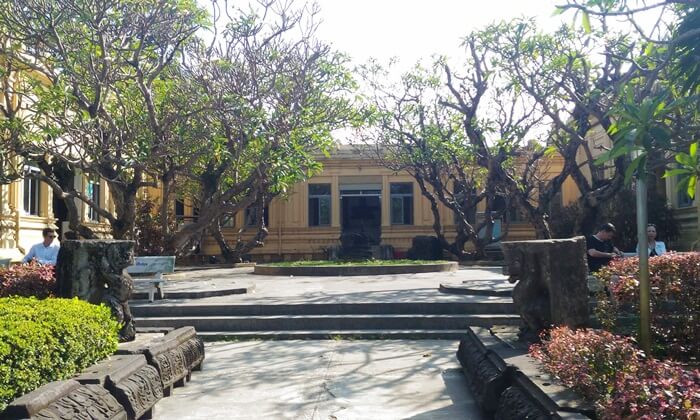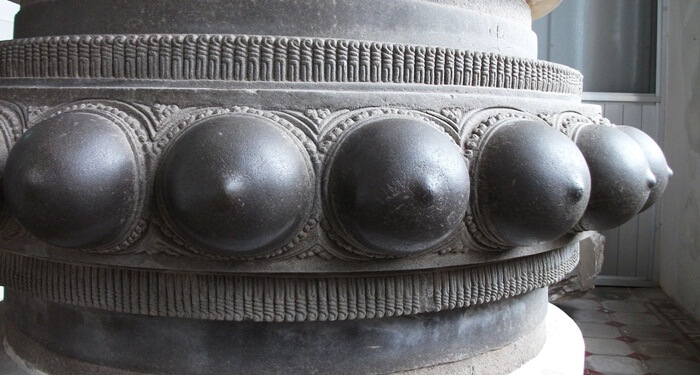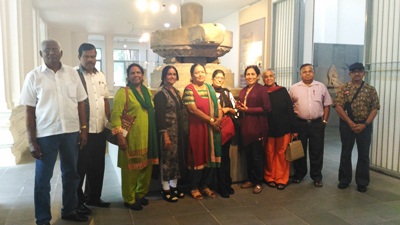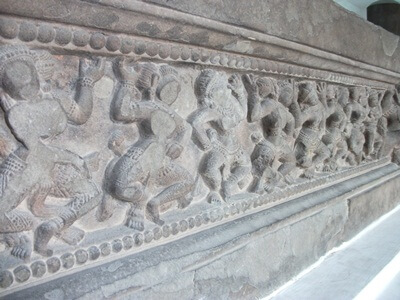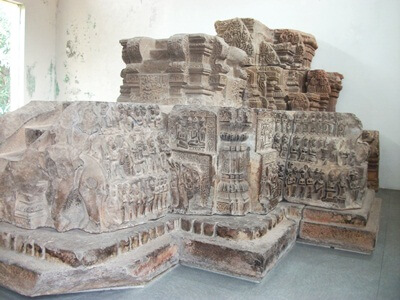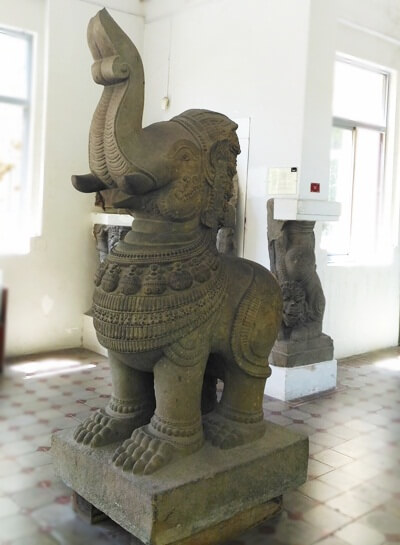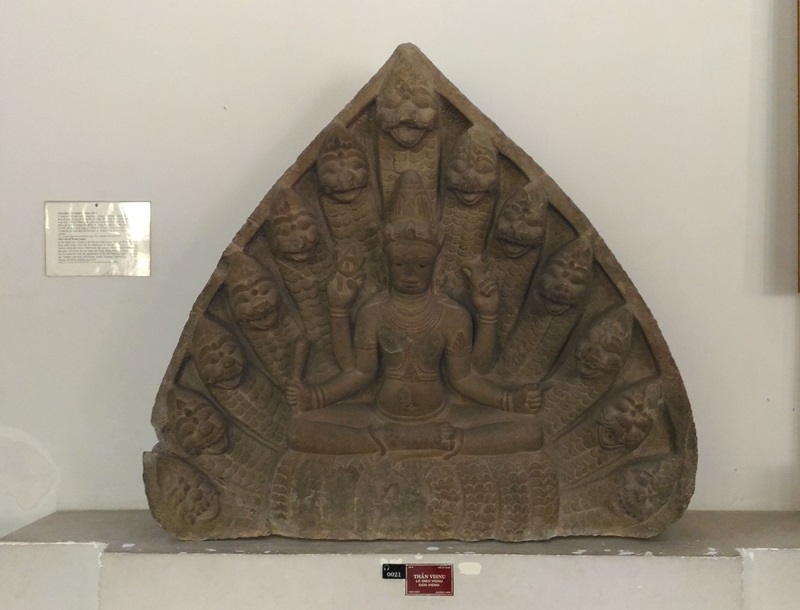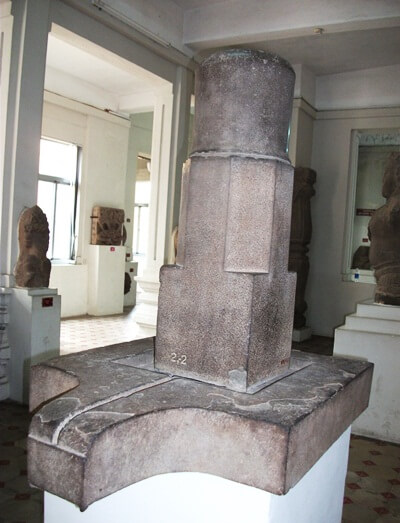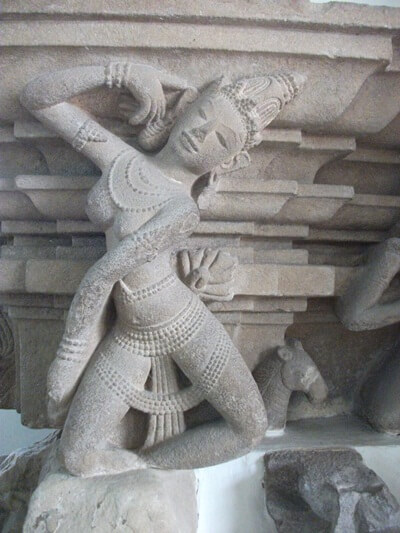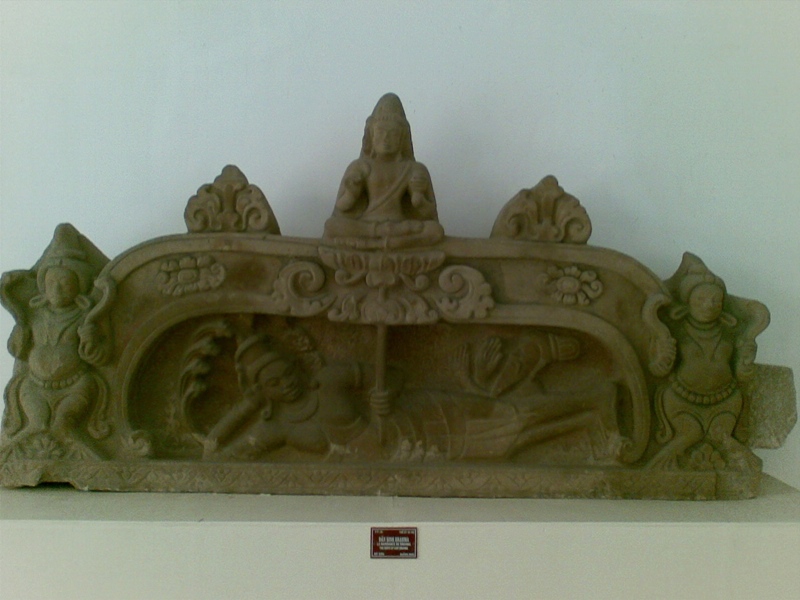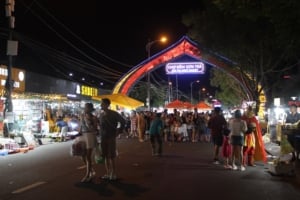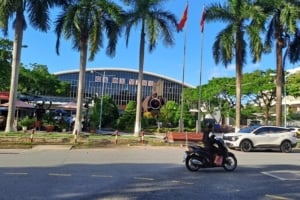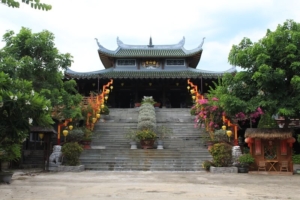As part of the first group of museums in Vietnam, the Cham Sculpture Museum in Da Nang City holds more than 2,000 artifacts of the culture of the Champa kingdom from the VII – XIII Centuries, collected from Quang Binh to Binh Dinh – Kon Tum, Central Vietnam.
Cham Sculpture Museum
- Address: 02, September 2 Street, Hai Chau District, Da Nang City, Vietnam
- Opening hours: 7:30 am – 5:00 pm
- Entrance ticket price: 60,000 VND/guest
Cham Museum was built between 1915 and 1919 by two architects, Delaval and Auclair, with the great contribution of French archaeologist Parmentier.
The building layout of the museum is U-shaped, using decorative motifs simulated from sculptures on Cham towers and temples.
Divided into several rooms, each area holds artifacts collected from each different region. Most of the statues and motifs on display at the museum are made of sandstone, dating from the 7th to 13th centuries.
1. Different sections of the museum
To help you save time visiting this museum with more than 6,000 m2, Vietnamdrive will suggest you explore it in the order below.
1.1. Come to ticket staff and enjoy the museum garden
When entering the museum’s gate, you immediately see the ticket counter on the right. After purchasing your ticket and passing through the adjacent ticket control area, you will be free to explore the museum.
The outside region has an airy opening view, and you can take pictures with the eye-catching architecture of the yellow building.
Prominent in the yard are the frangipani trees with white flowers. If coming here in the cold months, their leaves fall, and the only branches left, they look like dry ones. However, the luxuriant branches have white fragrant flowers in the warm spring and summer.
1.2. Explore artifacts inside the building
The Cham Sculpture Museum has two separate buildings connected by steps. The building in front will be the main part, containing the collectibles on regular display. In the back building, the collection of ancient statues has been brought to the museum recently and is often used as a thematic exhibition.
Now we come to visit each building.
1.2.a. Front building, permanent exhibition
Looking from the outside, on your left hand, the artifacts are arranged in clear sections, dating according to the development of time.
These regular exhibition areas include:
- Tra Kieu Exhibition,
- My Son Exhibition,
- Dong Duong Exhibition,
- Thap Mam Exhibition,
- Quang Tri – Quang Binh – Thua Thien Hue Exhibition,
- Da Nang Exhibition,
- Quang Nam Exhibition,
- Quang Ngai Exhibition,
- Binh Dinh – Kon Tum Exhibition,
- Exhibition of Epitaphs.
To visit this area easily, you follow the directions from left to right, from front to back. Another suggestion is to choose a guided Da Nang tour, so you can explore them easily with a tour guide.
You will then enter the themed exhibition to see more.
1.2.b. The back building, themed exhibition
This building has two floors: The first floor has a few sandstone exhibits, and the size of the artifacts and statues are large, so it is newer than the others in the front main rooms.
The second floor is used to display themed topics from time to time. Therefore, the samples here can be changed over time. But in general, the artifacts on the 2nd floor of this building are made of ceramic, clay, wood, and bronze.
Tips: Spend more time in the front building to discover the beautiful sculptural artifacts and statues. Also, visit the second region for only around 20 minutes.
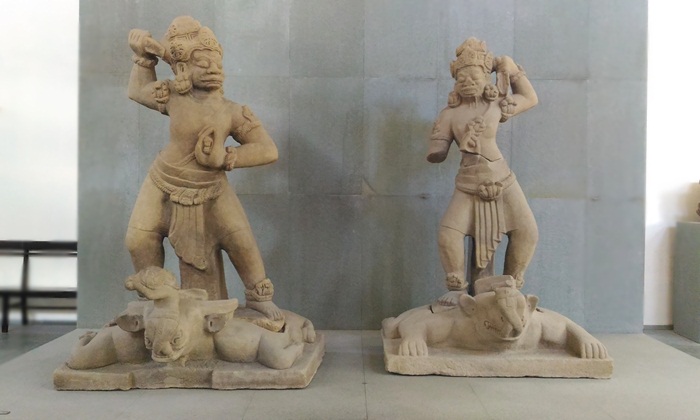
3. Remarkable artifacts in the Museum of Cham Sculpture
Cham people mainly follow Hinduism, so the statues, artifacts as well as decorative patterns shown on temples are all in this religious style.
With thousands of artifacts, this museum can take you an entire day to see and explore them all.
To save you time, Vietnamdrive has selected the following outstanding statues and artifacts that you should pay attention to study:
3.1. Tra Kieu altar: The highlight one displayed in the center of the museum is the beautiful artwork from Tra Kieu Temple. The altar dates from the 7th to 8th centuries. The outstanding sculptural images around the altar are modeled after a love story about the selection of the son-in-law of the kings under the Champa dynasty.
3.2. My Son altar: This altar used to belong to My Son Sanctuary, located right in the E1 temple area with the same age as Tra Kieu’s altar. My Son worshiping altar tells about the life of Brahmin monks, preaching, making medicine, and playing the flute.
3.3. Dong Duong altar: This largest object in the Cham museum dates from the 9th – 10th centuries, made of sandstone. Decorative images on the altar show the influence of Buddhism on the lives of Champa residents.
3.4. Statue of God Ganesha: The statue has an elephant head and a human body, 95cm high, dating from the 7th to the 8th centuries. The Ganesha statue was found in the temple complex of My Son Sanctuary and was recognized as a national piece in 2020.
3.5. Statue of Gajasimha: made of sandstone material, 251 cm high, found at the Mam Temple (Binh Dinh), on display in Da Nang Cham Museum in 1935. Gajasimha statue has an elephant head and a lion body, dating from the 7th – 8th centuries. This statue is also one of the national pieces at this museum.
3.6. Bronze statue of Bodhisattva Tara: This is a rare bronze statue in Cham sculpture. Bodhisattva Tara 1m high, dating back to the 9th century, was found in Dong Duong in Binh Dinh commune, Thang Binh district, Quang Nam province. The face with 3 eyes and the full round chest are the prominent features of this ancient statue.
3.7. Vishnu statue: dates from 7th – 8th centuries, found in My Son. The statue shows the image of Lord Vishnu sitting in contemplation and the surrounding Naga snakes.
3.8. Linga and Yoni: also dating from the 7th to 8th centuries, found in My Son Sanctuary. These two objects represent the fertility life of the Cham people, wishing for the proliferation, maintenance of the lineage, and development of the kingdom.
3.9. The Apsara Fairy: located in the corner of Tra Kieu’s room in the museum. The Apsara fairy statue is appreciated for its high artistic value, both flexible and gentle. The dances of the fairy Apsara are preserved to this day. If coming to My Son Holy Land, you can see this dance.
3.10. The statue of Siva giving birth to Brahma: This relief used to be decorated above the door of the E1 temple in My Son, which has been on display at the museum since 1935. The statue dating from the 7th to 8th centuries has the meaning of the birth of the universe.
The sculptures and statues from 1 to 6 above are considered to have high cultural, historical, and artistic value. Therefore, they are recognized as Vietnam’s national museum objects.
The Sculpture Museum of Cham Culture has become one of the famous destinations in Da Nang City, attracting thousands of tourists every year.
The Cham Museum is located at a convenient place, on the way from Da Nang International Airport to Hoi An, and facing the famous Dragon Bridge, so you can be easy to range this site during your journey in this city.

